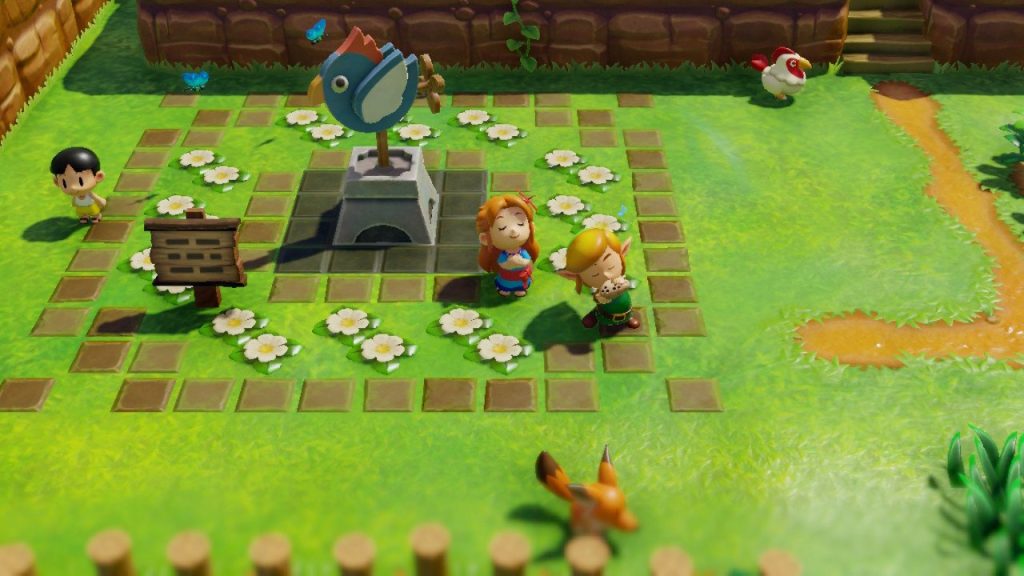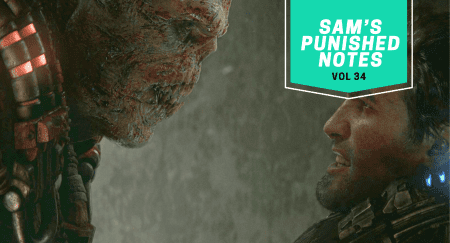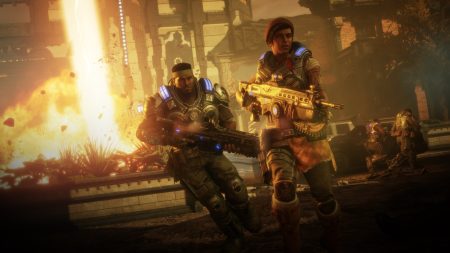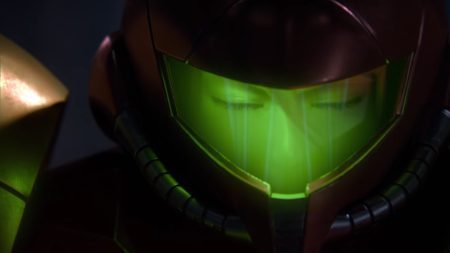Welcome to the latest Punished Notes, a series of my always-evolving and rarely consistent thoughts on the video game world. For this latest edition, I get into how Gears 5 criticizes military superpowers, the lovely remake of Link’s Awakening, and the annual joy of pumpkin-flavored stuff (happy fall)!
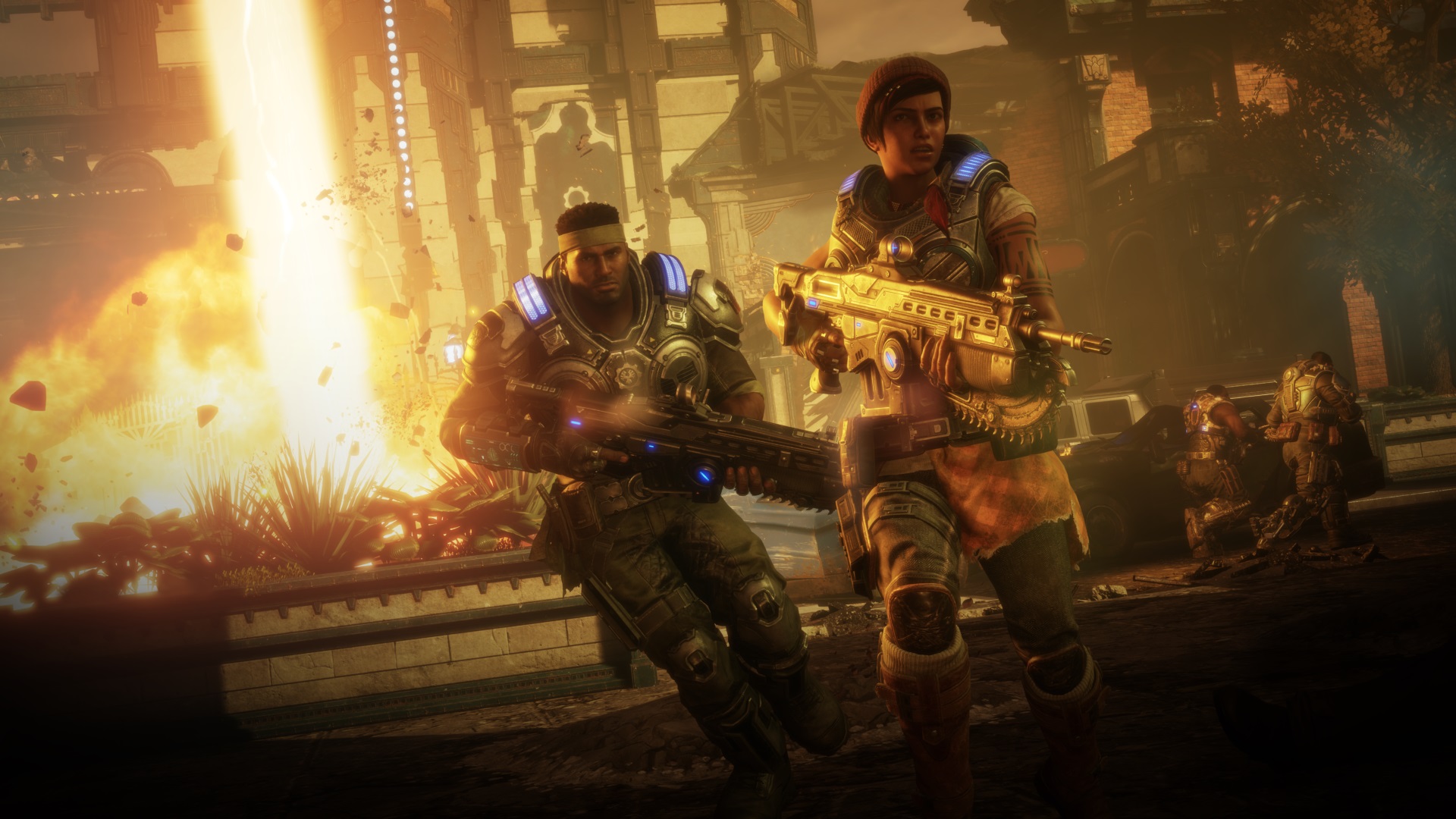
Gears 5 Takes on the Military Industrial Complex
If the original Gears of War trilogy was about the horrors of battle and how governments go to dangerous lengths to maintain order during wartime, Gears 5 is about the dangers of a military superpower’s very existence, even if it’s on your side.
(Don’t worry, only mild story spoilers ahead.)
Following 2016’s Gears of War 4, which largely existed as a bridge between what Epic Games had established and new developer The Coalition’s ambitions for the series, the latest campaign in the Gears franchise depicts a world freshly invaded by the Swarm (essentially a new version of the Locust) and ready once again to re-enact martial law in an effort to bring things back to the way they were. But were those times actually so great? According to the world of Gears 5 and many of the game’s main characters, the world of Sera was never this technologically advanced utopia, but rather a political hellscape fundamentally damaged by the existence of the Coalition of Governments (COG).
The latest title from developer The Coalition highlights how the presence of a military power always begets more conflict, as each Act (of which there are four) depicts in different ways how the COG’s attempts at building impenetrable defenses ultimately harms the very people it hopes to protect. Gears 5 shifts the focus away from big arms and big guns (though those still exist) to the machine-like nature of war, and how every gear used to build a weapon of destruction also adds to the machine that cranks out future atrocities. Gears 5 is not merely a tale of good vs. evil; it is a meditation on the negative consequences even the so-called “good guys” can levy upon others.
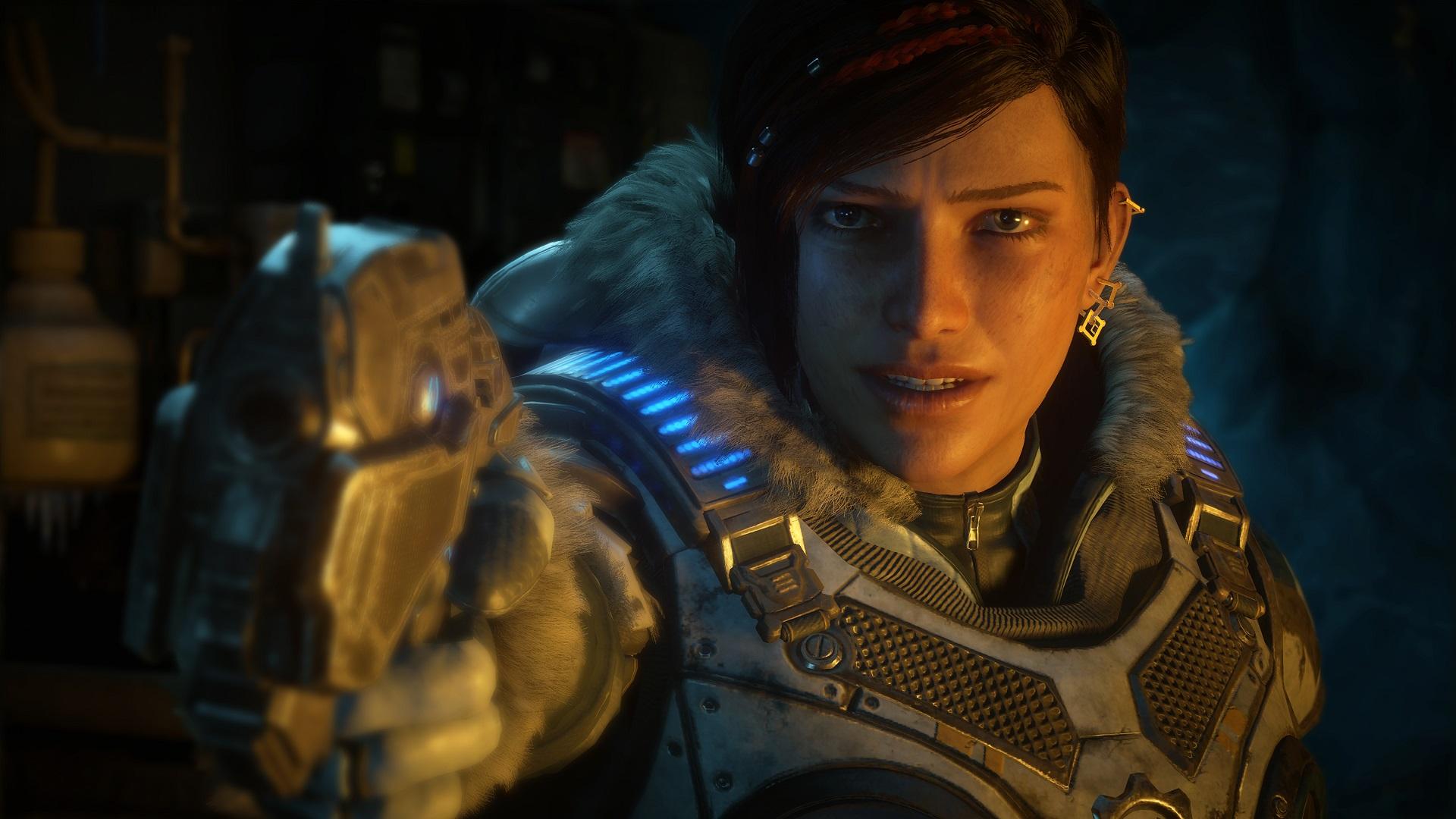
While earlier entries in the franchise hinted at the fascist tendencies of the COG (or at the very least presented the idea that the coalition was far from perfect), Gears 5 digs much deeper into the mendacity and follies of the political and military behemoth, even as the player is forced to fight on its behalf because there is seemingly no other path to victory. Tensions exist between soldiers supposedly on the same side because COG soldiers had killed innocent protesters. Some soldiers are even embarrassed to fight for the COG, as they are doing so out of obligation rather than choice.
On the outskirts of the COG’s center of gravity, outsiders who chose freedom over safety are effectively left for dead because the COG created a center of power that shoved all dissenters to the side. Meanwhile, those who picked safety over freedom have no other recourse once the Swarm comes for them, as they are only as protected as the COG allows them to be. And, even in victory, the destructive powers of the COG are put on display more prevalently than ever in Gears 5, as for once in the series everyone has extreme reservations about the Hammer of Dawn, a weapon of mass destruction that they end up using anyway in what amounts to Pyrrhic victory in the end.
In addition, everything about the locales presented shows that the consequences of war extend far beyond the battlefield. The evacuation of Settlement 2 in Act 1 depicts how a single reckless error by the powers that be can lead to needless civilian casualties. The icy wasteland in Act 2 demonstrates how easily people are forgotten by their supposed leaders, and the Vasgari desert in Act 3 is full of secrets pertaining to a previous civil war; secrets that provide greater context to why people were so distrustful of the COG in the first place. Finally, Act 4 ends the whole experience by reminding the player that those with the greatest access to powerful weapons won’t hesitate to use them, win or lose.
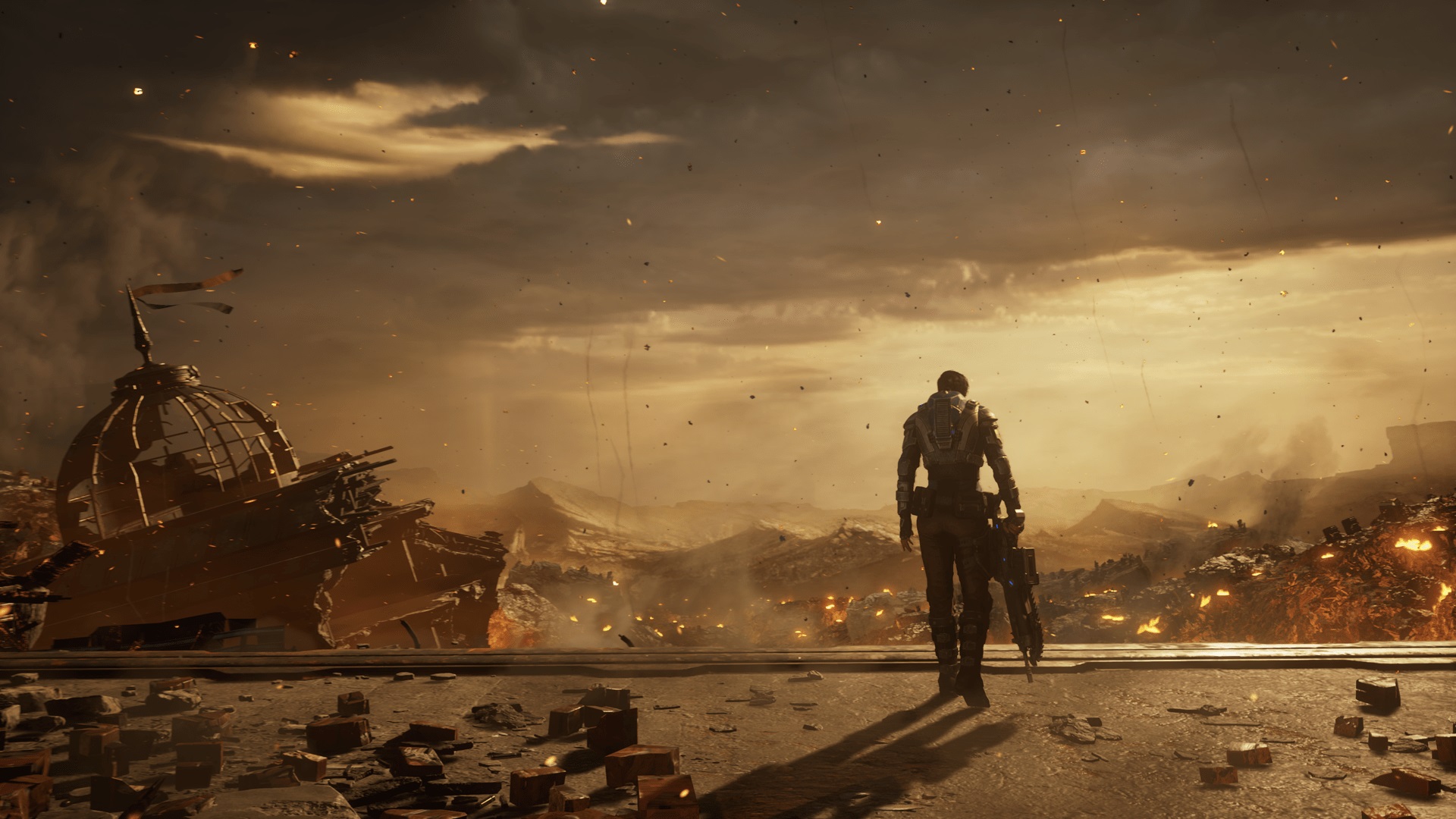
The Gears series has largely done a better job than its peers (i.e. Halo and Call of Duty) at describing how war is never a game to those who participate in it and are physically affected by it, and that even the most excitable jarheads ultimately feel a great deal of anguish and regret. Gears 5 takes everything a step further, moving beyond the basic “fight for the guy next to you” attitude of the first three games and towards “fight to restore normalcy even though normal was pretty volatile and miserable anyway.” Everyone can band together to fight off the Swarm, but once you’re done ask yourself if just war is better than unjust peace, as one character claims it is.
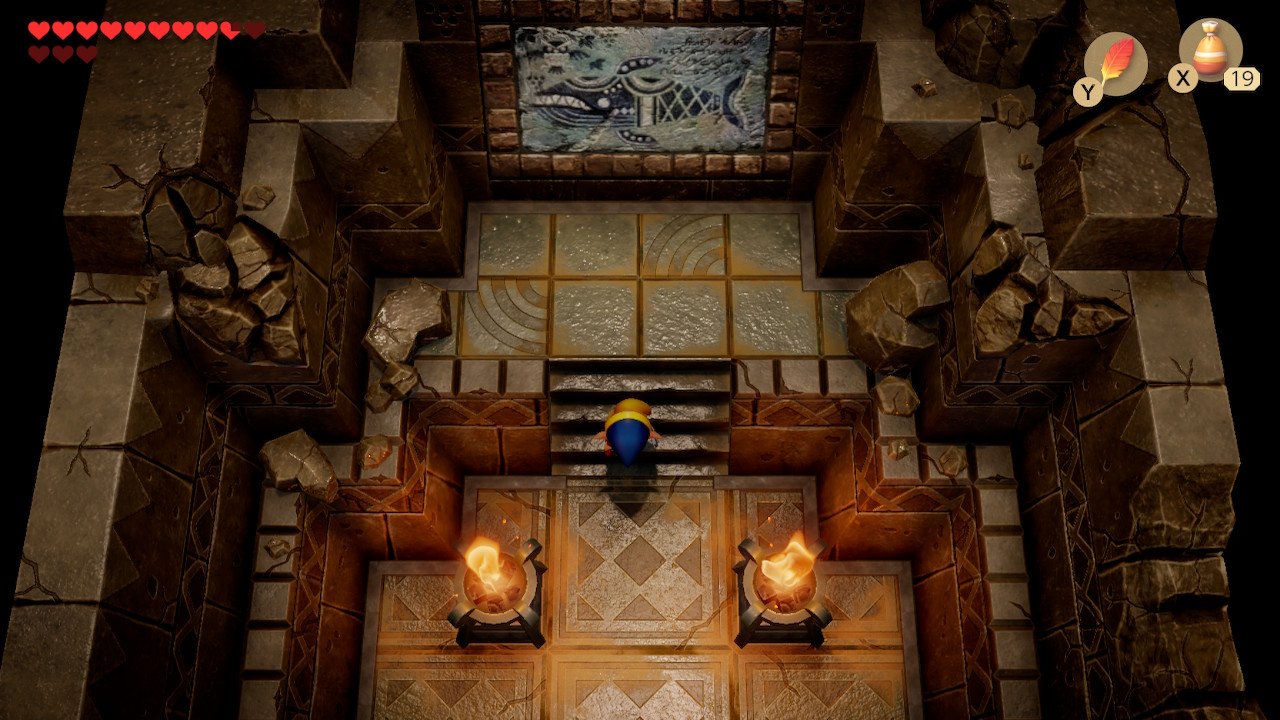
Link’s Awakening is the Exact Right Type of Remake
The Switch version of The Legend of Zelda: Link’s Awakening doesn’t change much from the original 1993 Game Boy game, but it accomplishes one of the most difficult goals of remaking a classic: making an older work of art feel fresh and new.
Obviously, a remake or updated version of any game should improve upon noticeable flaws, but it’s difficult to find the right balance of new and old. In certain cases, such as with Wind Waker HD, the core gameplay experience is fundamentally the same, with just the visuals (and that annoying Triforce shard quest) meaningfully altered. In other cases, as with Super Mario 64 DS, there are so many gameplay and story changes that it feels like a completely different game. Link’s Awakening, however, strikes that balance, providing an updated experience that doesn’t betray its original source material.
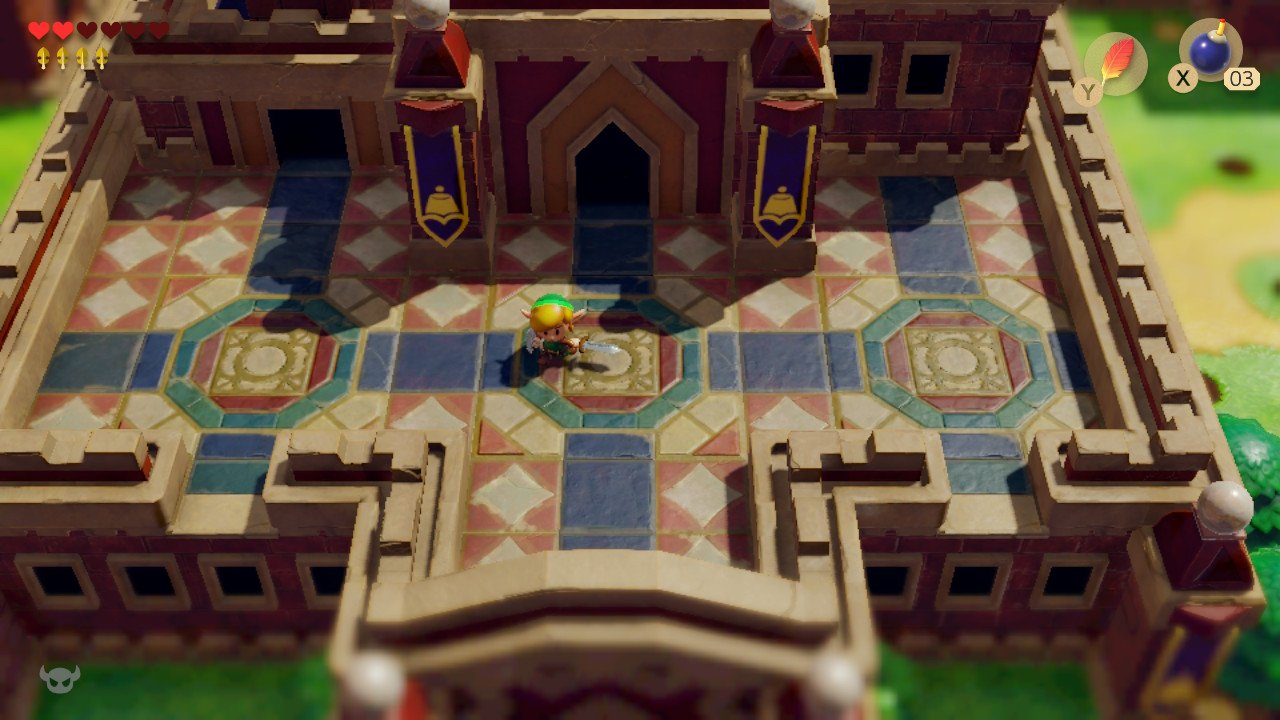
Beyond a clear graphical overhaul, improved music, and quality-of-life upgrades, Link’s Awakening on Switch doesn’t really alter much of what is found in the original version of the game. All the locales are right where you remember them, the story is exactly the same, and you have access to the same items and abilities you’d had before.
What’s noticeably different, however, is that the updated version of the game removes a number of barriers that made the original Link’s Awakening feel outdated. Link no longer has to move from fixed screen to fixed screen, making the overworld feel more connected and cohesive. The sword and shield are equipped at all times (instead of forcing the player to choose between, say, using the sword and using the bow), so combat is more fluid. The 2.5D graphical update makes objects more obviously identifiable from one another (this was seriously an issue even in the Game Boy Color version), and the improved orchestral score allows for a greater variety of instrumental sound cues, instead of the basic beeps, boops, and buzzes found in the original.
These changes do more than make Link’s Awakening cleaner and prettier; they take the focus away from the mild frustrations and flaws of an aged game and allow the player to fully immerse themselves in the odd, puzzling, and wonderful world found in the first handheld Zelda game. When I first played Link’s Awakening DX on Game Boy Color when I was seven or eight years old, I enjoyed the experience but never finished it (or even got that far at all), since at the end of the day it was a less fun and more fragmented version of superior Zelda titles like Ocarina of Time and A Link to the Past. Now that I can play Link’s Awakening in a more modern light, I can appreciate its clever dungeons, beautiful music, engrossing gameplay, and unique storyline in ways I could not previously. The remake has finally made me understand why people love this game so damn much, because now I do too.
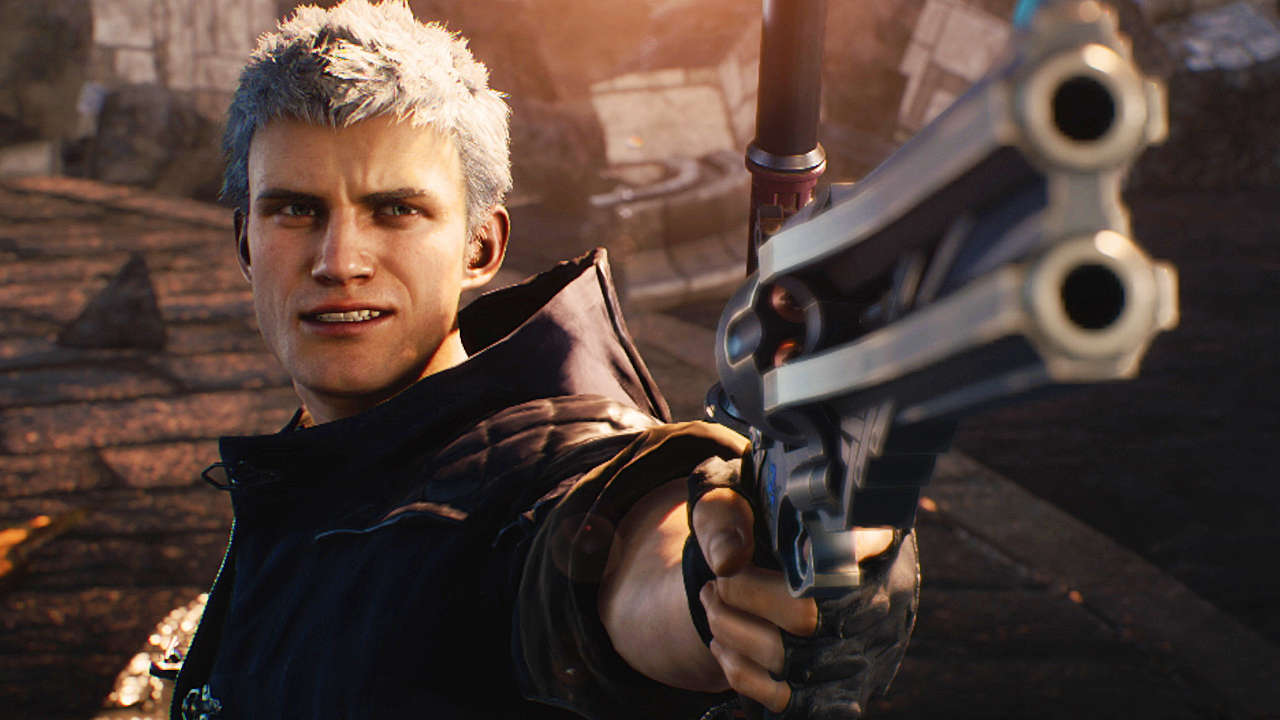
LIGHTNING ROUND!!!!!!!!!
-As I mentioned in the last Punished Chat, I recently played Devil May Cry 5 — the first time I ever attempted a game in this wild and horny series. Much like with Marvel Ultimate Alliance 3, Devil May Cry 5 succeeds because it fully embraces its own ridiculousness, presenting fluid, high-octane action combined with a beautifully demonic aesthetic, without bogging the player down too much in the absurd story and the lore. The game may seem like trash, but it’s among the best heaps of trash I’ve played in recent years, and for sure a GOTY contender.
-Speaking of GOTY contenders, Tetris 99’s continued updates have made an already phenomenal game that much better. Daily challenges, new skins, and the recently-added Invictus mode have added new life to the puzzle-battler (battle-puzzler?) in unexpected ways, and I still can’t get enough of it.
-Despite what I’ve just said about Tetris 99, Gears 5 might be my favorite multiplayer game of the year. Escape mode alone is more interesting and unique than any battle royale shooter I’ve played.
-I know I’m a couple years late to the Yooka-Laylee party, but having just played it, I’ve come to the conclusion that pretty much everyone’s opinion about the game was right. It tries so hard to feel like a game from the late 90s that your thoughts on the whole experience reflect how you feel about those games in general. It’s definitely not as good as Banjo-Kazooie, for example, but it has nearly the same exact structure and concept. Overall, I thought Yooka-Laylee was pretty good, as I generally view games from that era as pretty good.
-The recent additions of Dragon Quest’s Hero and Banjo & Kazooie to Super Smash Bros. Ultimate represent what other fighters and hero-style multiplayer games should do when adding new playable characters: make them as weird and out-of-the-box as possible. Otherwise, what’s even the point?
-While it is far from the best game in the series, Super Mario Kart might be a better pure racer than any other Mario Kart. The courses are flat and have sharp turns, and the janky, twitch-heavy controls make the most fundamental racing techniques crucial to attaining victory. Also, there’s no blue shell (thank goodness).
-I’ve tried the allegedly disappointing dungeon creator mode in the Link’s Awakening remake, and you know what? It’s not terrible. I’ve had a fun time rearranging my favorite dungeon rooms and replaying the best boss fights, all in record time. The feature is by no means great (or even all that exciting), but it provides enough fun and goofiness that I think everyone should give it a shot. It’s no Mario Maker, but it’s not awful.
-Fall is here, and you know what that means? PUMPKIN TIME BABY! Seriously, I know it’s a very cliched white person thing to love pumpkin-flavored stuff (and to exclusively consume pumpkin-related things in the months of October and November), but dammit I love me some pumpkin spice donuts and pumpkin ravioli. I even saw a pumpkin pasta sauce at the grocery store the other day! I bet it tastes like a Norah Jones album. Even if it’s bad, I insist on consuming the pumpkin sauce with pumpkin gnocchi and a side of pumpkin spice cookies with a hot cider to wash it all down. Happy fall!
Sam has been playing video games since his earliest years and has been writing about them since 2016. He’s a big fan of Nintendo games and complaining about The Last of Us Part II. You either agree wholeheartedly with his opinions or despise them. There is no in between.
A lifelong New Yorker, Sam views gaming as far more than a silly little pastime, and hopes though critical analysis and in-depth reviews to better understand the medium's artistic merit.
Twitter: @sam_martinelli.


